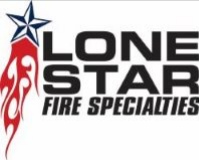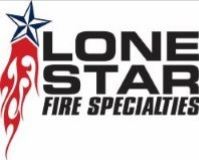Title Page
-
Type of Test:
-
Fire Department:
-
Unit #:
-
Pump Test Passed or Failed
-
Is the Apparatus or the Pump System "Out of Service"?
-
The entire Apparatus or Pump System?
-
Test Date:
-
Testing Location:
-
Testing Equipment:
-
Who Performed Test:
Apparatus Information
-
Model Year:
-
Manufacturer:
-
Apparatus Type:
-
Last Four of VIN #:
-
Engine Make:
- Detroit
- Cummins
- International
- Caterpillar
- Paccar
- Mercedes Benz
-
Engine Model:
-
Horsepower:
-
Engine Hours:
-
Booster Tank Size:
-
Pump Certification plate Present?
-
Governed RPM:
-
Pump Make:
-
Pump Serial #:
-
Pump Model:
- CSU
- CS
- CMU
- CM
- CXC
- Qmax
- Qflo
- DSD
- QSMG
- QSG
- QPAK
- MBP
- PSM
- LSM
- LDM
- LSP
- PUC
- End Suction
- N55
- Other
-
Single Stage or Multi Stage Pump:
-
Pump GPM Capacity:
- 250
- 500
- 750
- 1000
- 1250
- 1500
- 1750
- 2000
- 2250
Testing Conditions
-
Air Temperature:
-
Water Temp @ Start of Test:
-
Barometric Pressure:
-
Elevation:
-
ADDITIONAL INTAKES CAN BE USED FOR 1250 GPM PUMPS
-
Suction Hose Configuration:
-
Water Flow Measuring Equipment:
-
Tested From Draft:
Dry Vac, Tank to Pump, Pull Draft & Max Flow Test
-
Engine Governed Speed:
Dry Vacuum Test
-
Air or Electric Primer:
-
Is Primer Operational:
-
Why is it not operational?
-
Highest Inches of Vacuum Pulled:
-
Inches of Vacuum Lost Over 5 Minutes?
-
Where are the Vacuum Leaks?
Tank To Pump Flow Test
-
Pump Shift Indicator Lights Working:
-
Did Transmission go to 4th gear "Lock-Up"?
-
Tank To Pump GPM Flow Rate:
-
Pass or Fail
Pulling Draft
-
How Many Seconds to Pull Draft:
-
Pass or Fail:
Max Flow Test
-
What is the maximum amount of GPM the pump can produce:
-
Is Pump Capable of Flowing Capacity or Greater?
-
Is Red Valve Partially Closed - Do you need a second Intake - Is your Vacuum gauge above 15 Inches - Is the Pressure Relief Valve Open - Is it a 2 Stage Pump that is in Pressure instead of Volume - Is there a major vacuum leak on the intake side of the pump causing air bubbles in the systems tank water - Are all the hard suction connections that are loose or missing a rubber gasket - Does the Intake flow rate match the Discharge flow rate within 50 GPM
-
Then resolve the issue. If the resolution did not work select "Correction had no Effect"
100% Capacity Flow Test at 150 NET PSI (20 min.)
Pump Panel Gauge Readings (readings taken every 5 minutes and averaged)
-
GPM Flow Rate:
-
Master Pressure Gauge (psi):
-
Test Pressure Gauge (psi):
-
Test Vacuum Gauge (inches):
-
NET Pump Discharge Pressure? (psi)
-
Red Valve Position: It shall be assumed that the valve will remain in the same position throughout the test.
- 100%
- 75%
- 70%
- 65%
- 60%
- 55%
- 50%
- 45%
- 35%
-
Engine RPM:
-
Engine Temperature Range: (Average)
-
Engine Oil Pressure Range: (Average)
-
Transmission Temperature Range: (Average)
Cab Gauge Readings
-
Are the Emergency Lights on:
-
Engine RPM:
-
Engine Temperature Range: (Average)
-
Engine Oil Pressure Range: (Average)
-
Voltage:
-
Apparatus Pass or Fail this portion:
110% Overload Test at 165 NET PSI (5 min)
-
Is the pump capacity 750 GPM or Greater?
-
Then this stage of the test is not required!
Pump Panel Gauge Readings (readings taken every 5 minutes and averaged)
-
GPM Flow Rate:
-
Master Pressure Gauge (psi):
-
Test Pressure Gauge (psi):
-
Test Vacuum Gauge (inches):
-
NET Pump Discharge Pressure? (psi)
-
Engine RPM:
-
Engine Temperature Range: (Average)
-
Engine Oil Pressure Range: (Average)
-
Transmission Temperature Range: (Average)
Cab Gauge Readings
-
Engine RPM:
-
Engine Temperature Range: (Average)
-
Engine Oil Pressure Range: (Average)
-
Voltage:
-
Apparatus Pass or Fail this portion:
70% Capacity Flow Test at 200 NET PSI (10 min)
Pump Panel Gauge Readings (readings taken every 5 minutes and averaged)
-
GPM Flow Rate:
-
Master Pressure Gauge (psi):
-
Test Pressure Gauge (psi):
-
Test Vacuum Gauge (inches):
-
NET Pump Discharge Pressure? (psi)
-
Engine RPM:
-
Engine Temperature Range: (Average)
-
Engine Oil Pressure Range: (Average)
-
Transmission Temperature Range: (Average)
Cab Gauge Readings
-
Engine RPM:
-
Engine Temperature Range: (Average)
-
Engine Oil Pressure Range: (Average)
-
Voltage:
-
Apparatus Pass or Fail this portion:
50% Capacity Flow Test at 250 NET PSI (10 min)
Pump Panel Gauge Readings (readings taken every 5 minutes and averaged)
-
GPM Flow Rate:
-
Master Pressure Gauge (psi):
-
Test Pressure Gauge (psi):
-
Test Vacuum Gauge (inches):
-
NET Pump Discharge Pressure? (psi)
-
Engine RPM:
-
Engine Temperature Range: (Average)
-
Engine Oil Pressure Range: (Average)
-
Transmission Temperature Range: (Average)
Cab Gauge Readings
-
Engine RPM:
-
Engine Temperature Range: (Average)
-
Engine Oil Pressure Range: (Average)
-
Voltage:
-
Apparatus Pass or Fail this portion:
Pump Test Results
-
Did Apparatus or Pump meet any of the NFPA 1910 Chapter 6 "Out of Service" Criteria?
-
FD Member PLEASE Read: Chapter 6 Out-of-Service Criteria<br><br>6.1 General.<br>6.1.1 It shall be the responsibility of the AHJ to take the apparatus<br>or the defective portion of the apparatus out of service if any<br>of the deficiencies defined in this chapter are encountered.<br>6.1.2 Where a technician conducts an evaluation of the apparatus<br>to determine if the apparatus or a component should be<br>taken out of service, the technician shall report the findings to<br>the AHJ in writing, with one of the following recommendations:<br>(1) The apparatus shall be taken out of service.<br>(2) The apparatus shall be retained in service with specified<br>limitations.<br>(3) The apparatus shall be retained in service without<br>limitations.<br>6.1.3 In addition to the defects defined in this chapter, the<br>AHJ shall include out-of-service criteria based on state, provincial,<br>and local regulations; specific manufacturer’s recommendations;<br>and requirements established by the fire department.<br>6.1.4 The apparatus shall be returned to service only after the<br>defects and deficiencies that caused the apparatus to be taken<br>out of service have been corrected and the defective component<br>retested to the component manufacturer’s specification<br>and the requirements of this document.<br>6.1.5 The AHJ shall establish a means to immediately identify<br>that the apparatus is out of service for any operator who might<br>have reason to use the apparatus.<br>6.1.5.1 Out-of-service apparatus shall be identified by one of<br>the following means:<br>(1) Sign on the outside of the driver’s door near the door<br>handle<br>(2) Special bag that covers the steering wheel<br>(3) Large sign on the driver’s window<br>(4) Highly visible mechanism at the driver’s position on the<br>fire apparatus that all members of the fire department<br>recognize as an out-of-service indicator<br><br>6.4 Engine Systems.<br>6.4.1* The following defects and deficiencies of the engine<br>system shall cause the apparatus to be taken out of service:<br>(1) Engine that will not crank or start<br>(2) Engine system that has Class 3 leakage of oil<br>(3) Engine that is overheating<br>(4) Oil that contains coolant<br>(5) Oil that is diluted with fuel<br>(6) Fuel system component that has Class 2 leakage of fuel<br>(7) Stop-engine light that fails to turn off after engine is started<br>6.4.2 If there are deficiencies of the following systems or components,<br>a qualified technician shall conduct an out-of-service<br>evaluation and make a written report, including recommendations<br>to the AHJ:<br>(1) Air filter restriction<br>(2) Fuel tank, mountings, or straps<br><br>6.5 Engine Cooling System.<br>6.5.1 The following deficiencies of the engine cooling system<br>shall cause the apparatus to be taken out of service:<br>(1) Cooling system component that has Class 3 leakage<br>(2) Coolant that contains oil<br>(3) Cooling system that exceeds maximum operating<br>temperature<br>6.5.2 If there are deficiencies with the following systems or<br>components, a qualified technician shall conduct an out-of service<br>evaluation and make a written report, including recommendations<br>to the AHJ:<br>(1) Radiator<br>(2) Water pump bearing<br>(3) Cooling fan<br>(4) Coolant system components<br>6.5.2 If there are deficiencies with the following systems or<br>components, a qualified technician shall conduct an out-of service<br>evaluation and make a written report, including recommendations<br>to the AHJ:<br>(1) Radiator<br>(2) Water pump bearing<br>(3) Cooling fan<br>(4) Coolant system components<br><br>6.6 Transmission and Clutch.<br>6.6.1 The following defects and deficiencies of the transmission<br>and clutch shall cause the apparatus to be taken out of service:<br>(1) Automatic transmission that overheats in any range<br>(2) Automatic transmission that has a “do not shift” light on<br>(3) Transmission components that have Class 3 leakage of<br>transmission oil<br>(4) Transmission oil contaminated with coolant<br>6.6.2 If there are deficiencies of the following systems or components,<br>a qualified technician shall conduct an out-of-service<br>evaluation and make a written report, including recommendations<br>to the AHJ:<br>(1) Clutch components<br>(2) Transmission components<br>(3) Shift linkages<br><br>6.9 Fire Pump System.<br>6.9.1 The following deficiencies of the fire pump system shall<br>cause the pumping system to be taken out of service:<br>(1) Pump that will not engage<br>(2) Pump shift indicators in cab and on operator’s panel that<br>do not function properly<br>(3) Pressure control system that is not operational<br>(4) Pump transmission components that have Class 3 leakage<br>of fluid<br>(5) Pump operator’s panel throttle that is not operational<br>(6)*Pump operator’s engine speed advancement interlock<br>that is not operational <br>6.9.2 If there are deficiencies of the following systems or components,<br>a qualified technician shall conduct an out-of-service<br>evaluation and make a written report, including recommendations<br>to the AHJ:<br>(1) Pump transmission lubricant<br>(2) Valves<br>(3) Valve controls<br>(4) Pump piping<br>(5) Pressure-indicating devices<br>(6) Water tank<br>(7) Water level indicator<br>6.9.3 If pump shaft seals leak beyond the manufacturer’s<br>specifications, a qualified technician shall conduct an out-of service<br>evaluation of the problem and make a written report,<br>including recommendations to the AHJ.<br>6.9.4 If the pump test indicates a deficiency, a qualified technician<br>shall conduct an out-of-service evaluation and make a<br>written report, including recommendations to the AHJ.<br>
-
Additional Notes for "NON Out Of Service" Items
-
Are ALL discharges gauges in proper working order?
-
Dry Vacuum Test:
-
Tank To Pump Flow Test:
-
100%, 70% & 50% Capacity Flow Test:
-
Pressure Relief Valve / Governor Test:
-
Engine Governed Speed:
-
Replaced Intake Screens?
-
Did the Engine Overheat?
-
Was Engine Cooler Turned On?
-
Did the Transmission Overheat?
-
Picture of Trend?
-
Damage to FD Property or Apparatus







